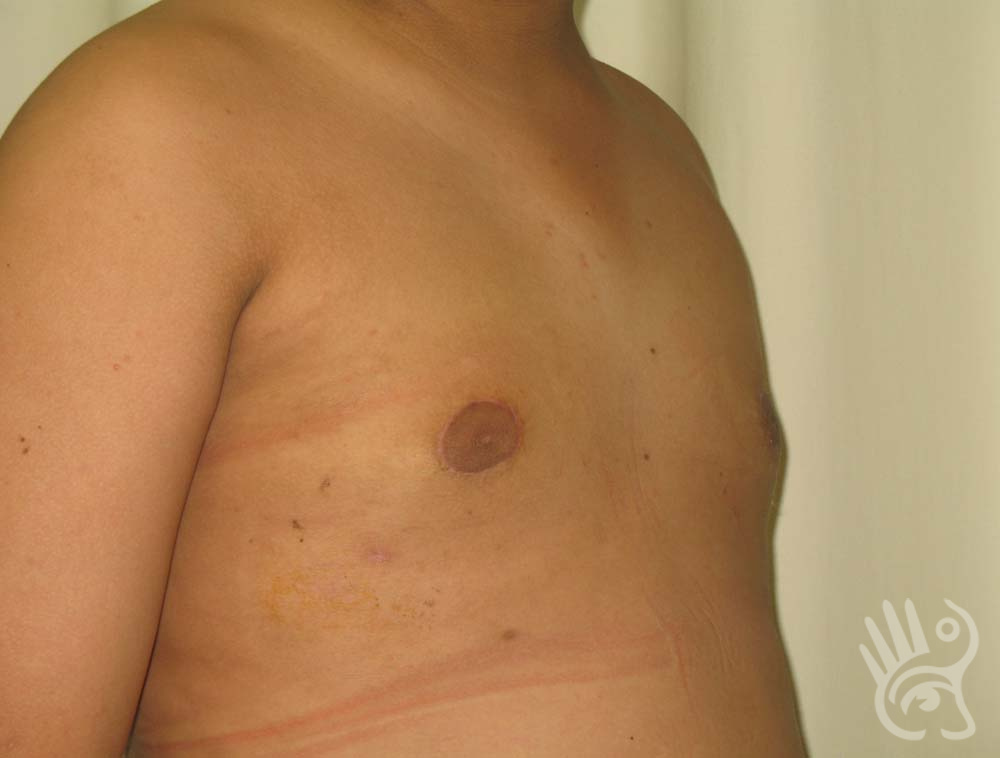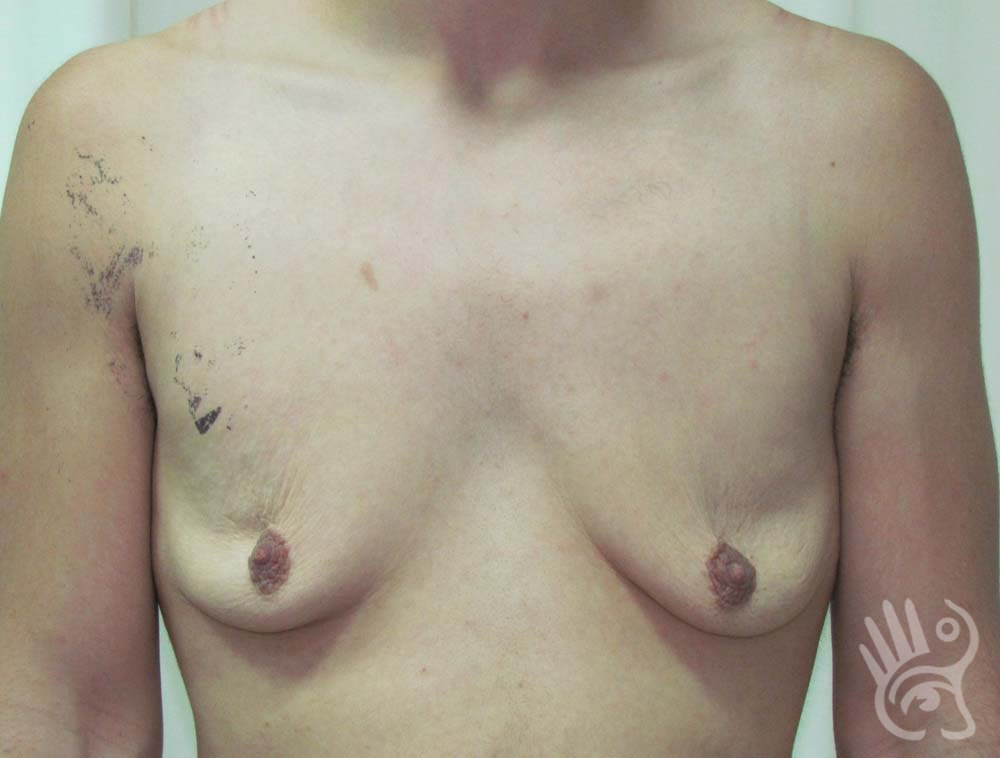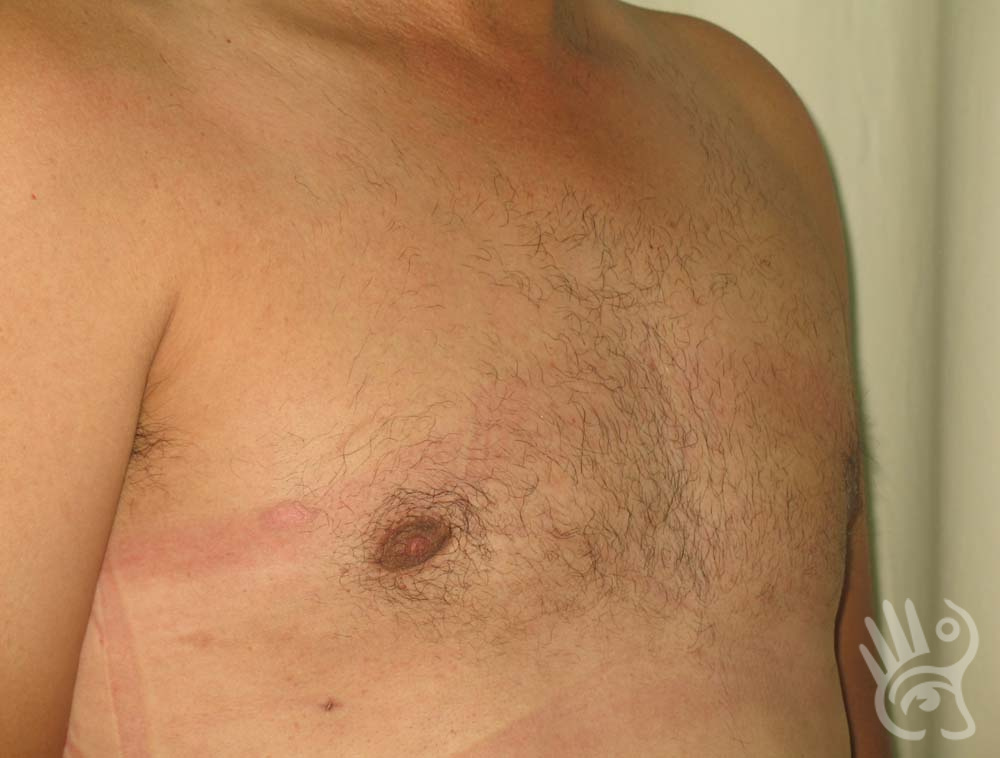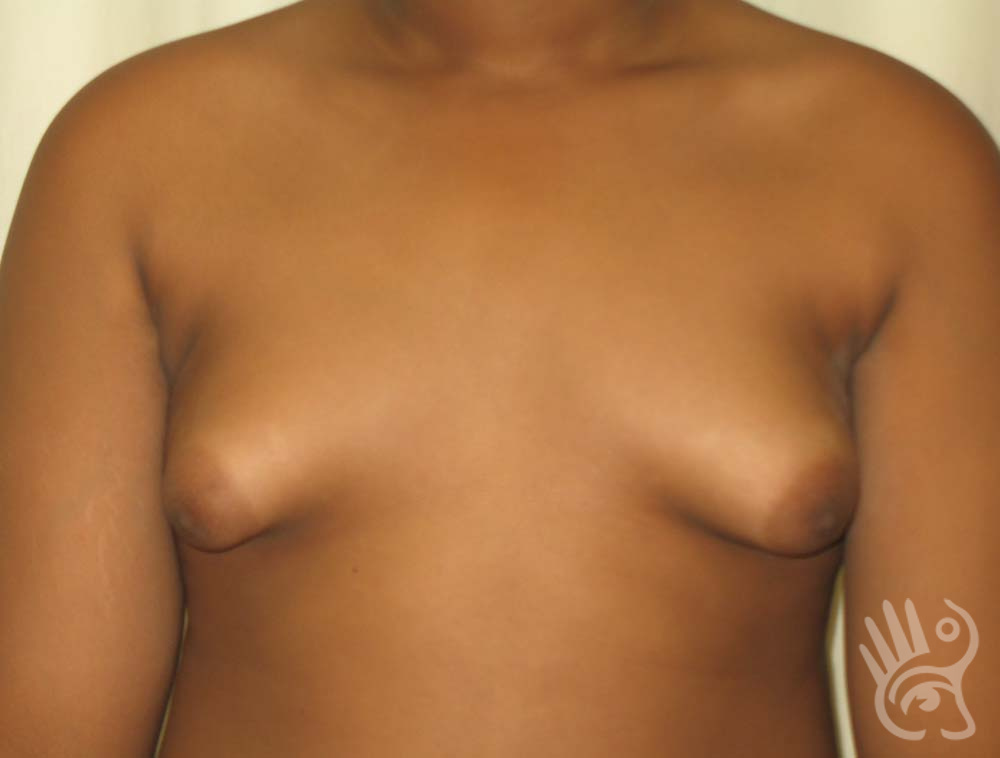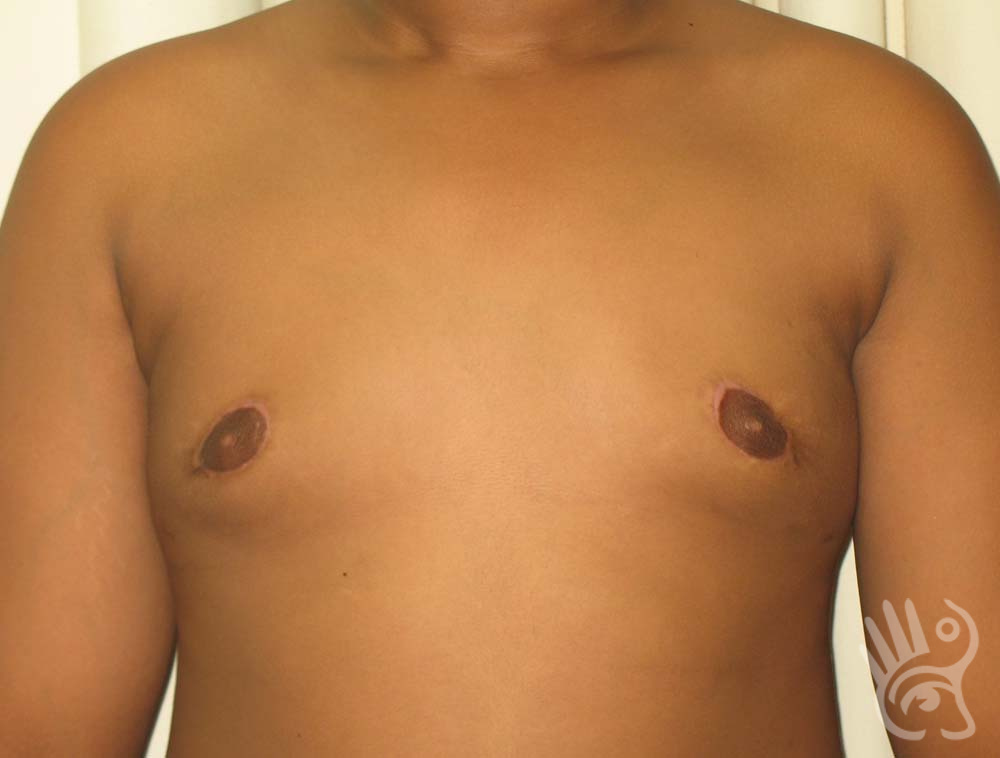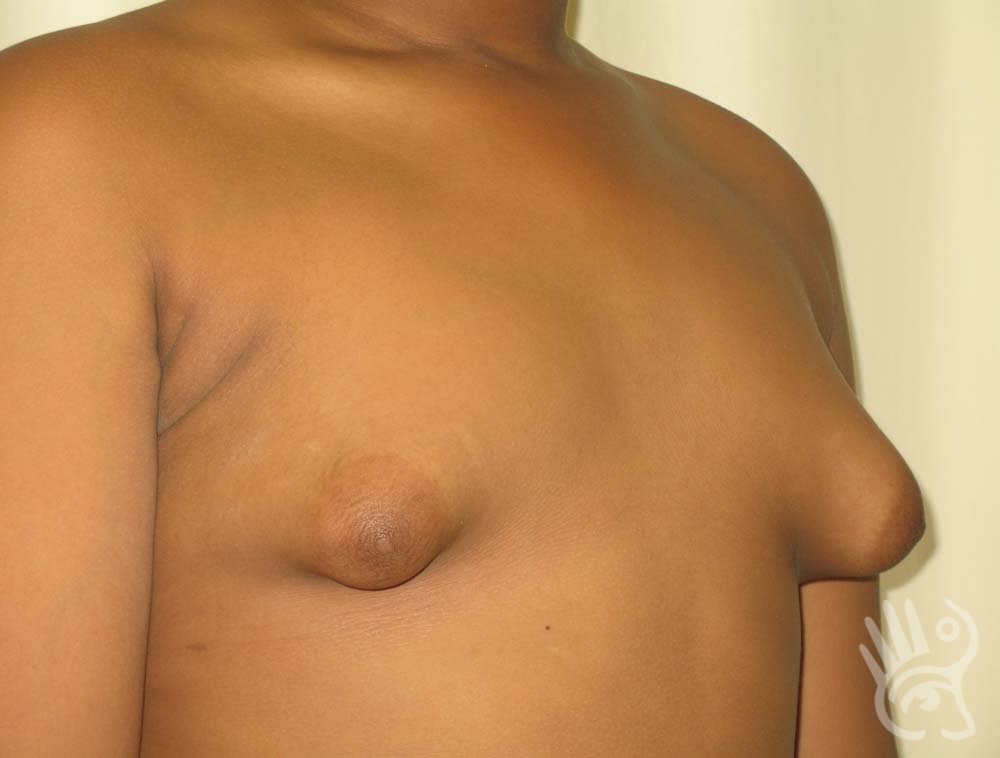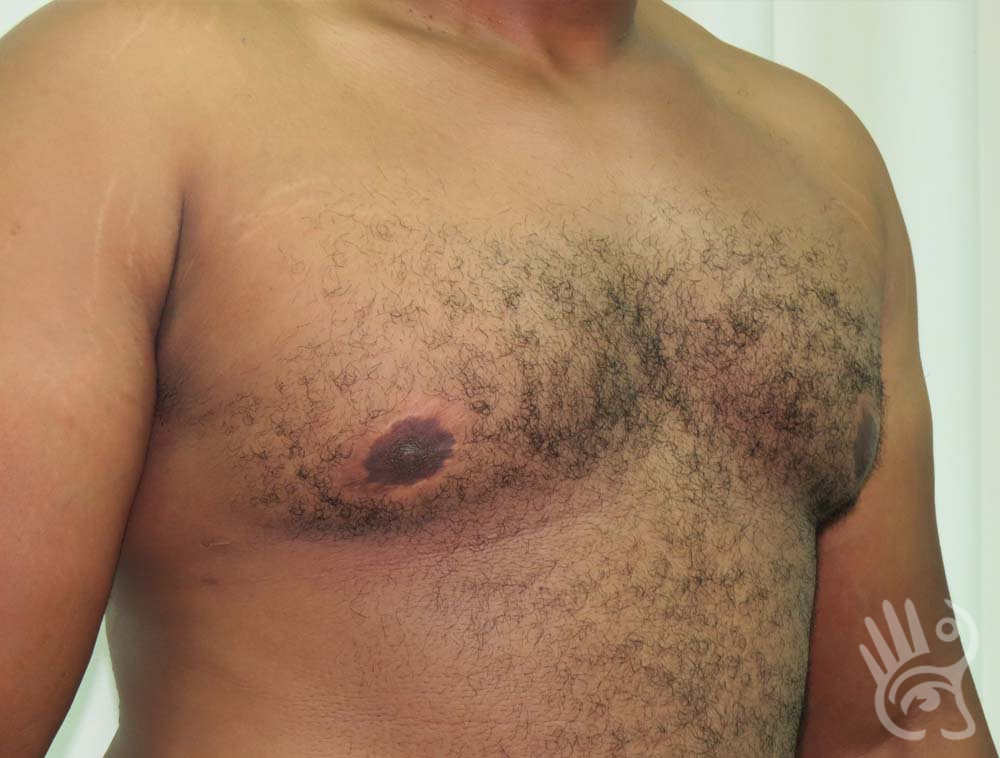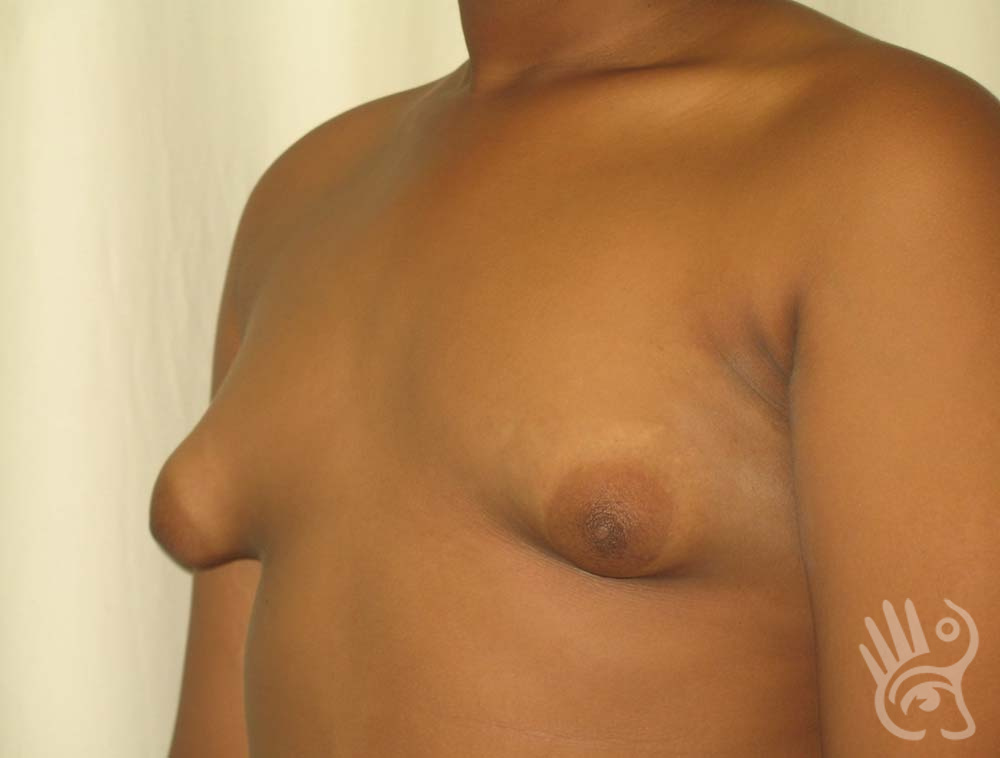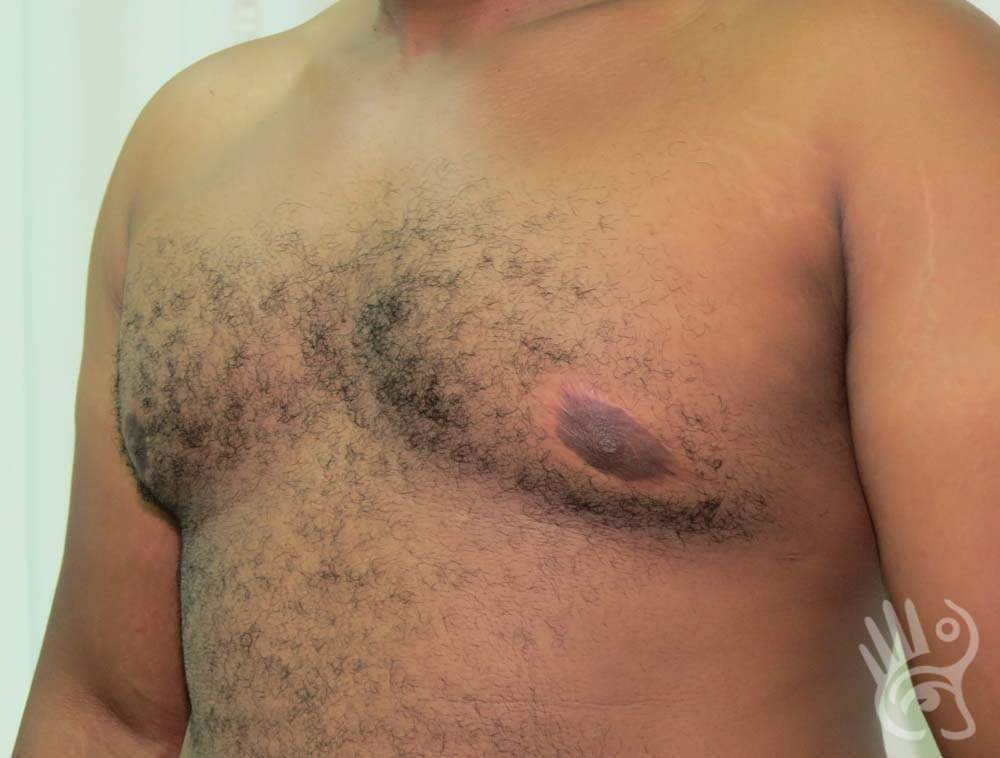Gynecomastia is the formation of female breasts in men, whereby one or both breasts are bigger than normal. Breast development in men can be painful but also be a source of embarrassment during sports, swimming and visits to the sauna and the beach. With gynecomastia in general there is excess breast tissue. In some instances, breast development is mainly fatty tissues (pseudo-gynecomastia). There are various causes of breast development in men among which adipositas, side effect of many different medicines, hormones, puberty, metabolic changes or breast cancer in men. Often it is difficult to point out the cause of the gynecomastia. Sometimes breast development is a sign of a serious disease such as thyroid disease, liver disease, a tumor of the adrenals or testis. If there is any suspicion of one of these diseases this needs to be investigated, diagnosed and treated accordingly. Gynecomastia occurs most often in boys going through puberty. This type of breast development normally disappears on its own within 2 years. If it has not disappeared by then it probably never will and a surgical correction is necessary. Even if the cause of a gynecomastia has been treated the correction often still is needs to be done.

